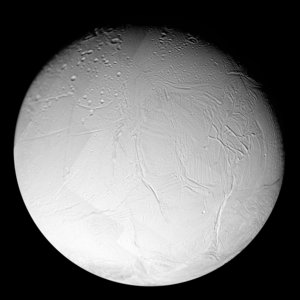Accept all cookies Accept only essential cookies See our Cookie Notice

About ESA
The European Space Agency (ESA) is Europe’s gateway to space. Its mission is to shape the development of Europe’s space capability and ensure that investment in space continues to deliver benefits to the citizens of Europe and the world.
Highlights
ESA - United space in Europe
This is ESA ESA facts Member States & Cooperating States Funding Director General Top management For Member State Delegations European vision European Space Policy ESA & EU Space Councils Responsibility & Sustainability Annual Report Calendar of meetings Corporate newsEstablishments & sites
ESA Headquarters ESA ESTEC ESA ESOC ESA ESRIN ESA EAC ESA ESAC Europe's Spaceport ESA ESEC ESA ECSAT Brussels Office Washington OfficeWorking with ESA
Business with ESA ESA Commercialisation Gateway Law at ESA Careers Cyber resilience at ESA IT at ESA Newsroom Partnerships Merchandising Licence Education Open Space Innovation Platform Integrity and Reporting Administrative Tribunal Health and SafetyMore about ESA
History ESA Historical Archives Exhibitions Publications Art & Culture ESA Merchandise Kids Diversity ESA Brand Centre ESA ChampionsSpace in Member States
Find out more about space activities in our 23 Member States, and understand how ESA works together with their national agencies, institutions and organisations.
Science & Exploration
Exploring our Solar System and unlocking the secrets of the Universe
Go to topicAstronauts
Missions
Juice Euclid Webb Solar Orbiter BepiColombo Gaia ExoMars Cheops Exoplanet missions More missionsActivities
International Space Station Orion service module Gateway Concordia Caves & Pangaea BenefitsLatest
Space Safety
Protecting life and infrastructure on Earth and in orbit
Go to topicAsteroids
Asteroids and Planetary Defence Asteroid danger explained Flyeye telescope: asteroid detection Hera mission: asteroid deflection Near-Earth Object Coordination CentreSpace junk
About space debris Space debris by the numbers Space Environment Report In space refuelling, refurbishing and removingSafety from space
Clean Space ecodesign Zero Debris Technologies Space for Earth Supporting Sustainable DevelopmentLatest
Applications
Using space to benefit citizens and meet future challenges on Earth
Go to topicObserving the Earth
Observing the Earth Future EO Copernicus Meteorology Space for our climate Satellite missionsCommercialisation
ESA Commercialisation Gateway Open Space Innovation Platform Business Incubation ESA Space SolutionsEnabling & Support
Making space accessible and developing the technologies for the future
Go to topicBuilding missions
Space Engineering and Technology Test centre Laboratories Concurrent Design Facility Preparing for the future Shaping the Future Discovery and Preparation Advanced Concepts TeamSpace transportation
Space Transportation Ariane Vega Space Rider Future space transportation Boost! Europe's Spaceport Launches from Europe's Spaceport from 2012Latest

Saturn's saucer moons
Thank you for liking
You have already liked this page, you can only like it once!
The highest resolution images of Pan and Atlas reveal distinctive “flying saucer” shapes created by prominent equatorial ridges not seen on the other small moons of Saturn.
From left to right: a view of Atlas' trailing hemisphere, with north up, at a spatial scale of about 1 km/ pixel; Atlas seen at about 250 m/per pixel from mid-southern latitudes, with the sub-Saturn hemisphere at the top and leading hemisphere to the left; Pan's trailing hemisphere seen at about 3 km per pixel from low southern latitudes; an equatorial view, with Saturn in the background, of Pan's anti-Saturn hemisphere at about 1 km per pixel.
On Atlas, the ridge extends 20 to 30° in latitude on either side of the equator; on Pan, its latitudinal extent is 15 to 20°. Atlas shows more asymmetry than Pan in having a more rounded ridge in the leading and sub-Saturn quadrants.
The heights of the ridges can be crudely estimated by assuming (ellipsoidal) shapes that lack ridges and vary smoothly cross the equator. Heights of Atlas' ridge range from about 3 km at 270° west to 5 km at 180° and 0°. Pan's ridge reaches about 4 km at 0° west, and is about 1.5 km high over most of the rest of the equator.
The ridges represent about 27% of Atlas' volume and 10% of Pan's volume.
The images were acquired with the Cassini spacecraft narrow-angle camera between 2005 and 2007. Pan is 33 km across at its equator and 21 km across at its poles; Atlas is 39 km across at its equator and 18 km across at its poles.
-
CREDIT
NASA/JPL/Space Science Institute -
LICENCE
ESA Standard Licence

Saturn’s moon zoo

Pan

Iapetus

A Scene of Craters















 Germany
Germany
 Austria
Austria
 Belgium
Belgium
 Denmark
Denmark
 Spain
Spain
 Estonia
Estonia
 Finland
Finland
 France
France
 Greece
Greece
 Hungary
Hungary
 Ireland
Ireland
 Italy
Italy
 Luxembourg
Luxembourg
 Norway
Norway
 The Netherlands
The Netherlands
 Poland
Poland
 Portugal
Portugal
 Czechia
Czechia
 Romania
Romania
 United Kingdom
United Kingdom
 Slovenia
Slovenia
 Sweden
Sweden
 Switzerland
Switzerland
























